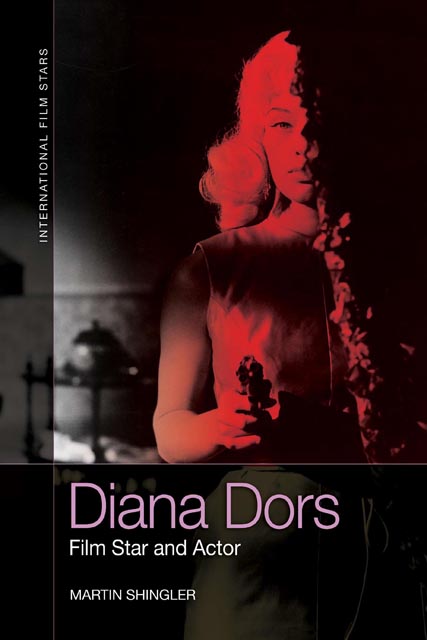6 - A marriage of method and style in The Unholy Wife (1957)
Published online by Cambridge University Press: 14 July 2023
Summary
The Unholy Wife features Diana Dors in one of her most unsympathetic roles as Phyllis Hochen, an unfaithful wife with no qualms about her husband being executed for a murder she's committed, as well as a neglectful mother who resents her only child from the moment he's born. Once life with the man she's married for security has become tedious, Phyllis plots to kill her husband Paul. Having mistakenly shot his best friend, she frames Paul for this, securing a conviction that sentences him to death. As a bad wife, negligent mother and an all-round wicked woman, Phyllis Hochen is presented in this Technicolor film noir as nothing less than a monstrous incarnation of evil. The task of embodying such a character was no mean feat given that the actress needed to foreground her wickedness without turning her into a grotesque caricature since she needed to elicit sympathy when Phyllis finds redemption in religion at the very end of the film. As discussed in this chapter, this was made more challenging for a British actress working with numerous American Method actors that not only used a range of techniques such as improvisation and ‘affective memory’ but also deemed the work of their colleagues from across the Atlantic to be old-fashioned, superficial and unemotional.
Diana Dors’ performance in her American crime melodrama displays as much composure and control as in her British farce Is Your Honeymoon Really Necessary? (Elvey 1953) despite her character being very different and highly unsympathetic. Consolidating her signature style or idiolect, she redeployed her trademark postures when playing an archetypal femme fatale in The Unholy Wife (Farrow 1957), while also adapting her acting style to the techniques of the Method actors performing with her. Analysis of several scenes of this critically underrated movie reveals just how versatile the British star was when working in Hollywood in 1956.
Method and style
John Farrow's casting of Diana Dors and Rod Steiger in the roles of Phyllis and Paul Hochen enabled the producer-director to capitalise on the vogue for both blonde bombshells and male Method actors. While the two stars had received praise for the realism and psychological complexity of their screen performances – Steiger for On the Waterfront (Kazan 1954) and Dors for Yield to the Night (Lee Thompson 1956) – they were very different kinds of actor.
- Type
- Chapter
- Information
- Diana DorsFilm Star and Actor, pp. 99 - 108Publisher: Edinburgh University PressPrint publication year: 2022



